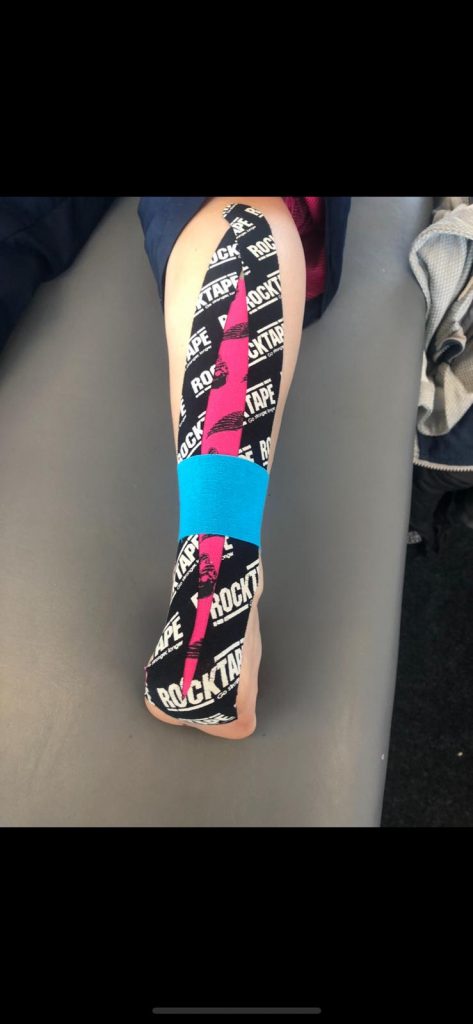By Bernadette Hughes
Calf pains and strains?
We are now into week six of living under quarantine measures and for many of you this has meant working from home, being furloughed or not able to work at all. We have been fortunate that this has been paired with some lovely sunshine and still being allowed to get outside for exercise.
Many of you may have increased the amount of running, cycling and working out from home you are doing and some may have just started undertaking these activities for the first time. This is of course great for both the body and mind (as long as you’re building it up slowly), but whilst your feet and legs are clocking up the miles, how are your calf muscles feeling about this?
A bit about the anatomy of calves

So lets firstly talk a little bit more about the calves. Situated at the back, lower portion of the leg, the two main muscles that make up the calves are the gastrocnemius and soleus (collectively known as the triceps surae) which attach onto the heel bone (Calcaneus), via the achilles tendon.
The gastrocnemius is a powerful superficial muscle that has two muscle bellies. It is largely involved in standing, walking, running and jumping.
As it has its attachments just above the knee and at the achilles tendon, this means it is involved in both flexing (bending from straight) the knee joint and plantar flexing the foot (pointing foot down).
The soleus muscle is a flat muscle that lies underneath the gastrocnemius. It attaches just below the knee and so is the prime mover for plantar flexing the foot. It is therefore involved in activities such as dancing, running and walking (in particular the pushing off the ground phase of walking).
In sports such as cycling, this muscle mainly works “isometrically”. This basically means that the muscle ends up holding the joint in place. Just like if you hold a box out in front of you, your arms get sore from “taking the strain”. In cycling your upper-legs are doing most of the work while the calf muscles hold your feet to the peddles.
Things to bear in mind…
Strains of this muscle group are very common with athletes and are subject to acute strain in all sports involving a strong running-type action, especially on hard surfaces or when going uphill. They are also subject to chronic over-use tension and can become hard and congested before any painful symptoms appear.
Without getting into too much detail about the mechanics of the calves, it is important to consider stretching and flexibility as a crucial part of your fitness. Stretching not only keeps your muscles flexible, strong and healthy but you need flexibility to maintain the full range of motion in your joints. Without it, the muscles shorten and become tight and can put you at risk for joint pain, strains and muscle damage.
So let me talk you through some stretches. Here are a couple of options
Gastrocnemius
Stretch 1
Stand with a split stance with one foot in front of the other. With your back knee straight, lean your body forward and bend the knee of your front leg. You should feel a stretch in the calf of your back leg.
Stretch 2
Stand with your front knee straight, flex your foot upwards with your toes on a step or against a wall. You should feel the stretch in the front calf.
Soleus
Stretch 1
Similar to the Gastrocnemius stretch 1, but this time with your back knee bent, lean your body forward. You should feel the stretch in your back calf.
Stretch 2
Again, similar to the 2nd stretch above but this time with the front knee bent. By bending the knee, and you should feel a stretch in the front calf.
It is important that you stretch your calf muscles as above both with a bent and a straight knee to ensure you are getting a stretch into both muscles.
What about taping?

In the absence of being able to get a sports massage at the moment with the current measures in place, another tool that can help your calves if you are started to feel some niggles is to self-apply some kinesiology tape. You may be wondering what exactly this tape is and what it does … but you may well have seen runners, cyclists and other athletes wearing it during training or competitions.
The tape effectively works by lifting the skin, accelerating blood flow to the applied area and thus increasing the amount of oxygen available to the muscles, which reduces fatigue. It also promotes the drainage of toxins and has been clinically shown to help with the natural response to inflammation, often helping to alleviate pain.
Kinesiology tape can be easily purchased online and normally comes with full instructions on how to apply it and you can also have some fun with it as it comes in lots of different colours and patterns.
If you would like any guidance on how to apply tape, we would be happy to help. Email us at info@oakparkclinic.co.uk.
Top photo by Daria Shevtsova from Pexels
